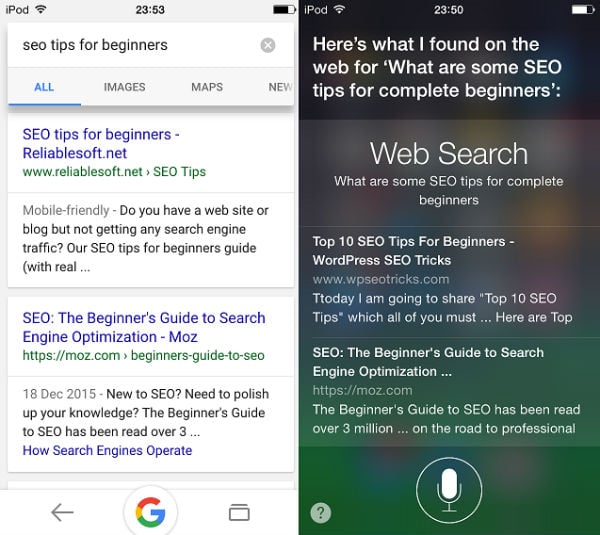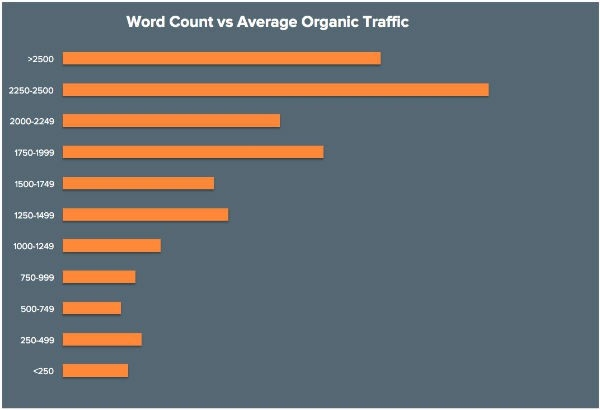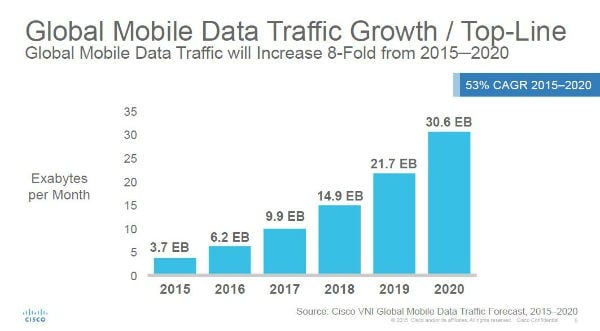I think you’ll agree with me when I say that landing on the first page of Google is #goals.
After all, in Google and in life, headlines are what matter the most. The front page. The top 3. You get it.
But you’re probably thinking “this is too much trouble.” First off, deep breath. I’ve got some good news for you.
As long as you stay up to date, there’s a good chance that you can skyrocket your site to first place.
In today’s post I’m going to show you 4 techniques to improve and update your SEO strategy for 2021 as we wrap up the calendar year.
1. Optimize for Mobile Search
Unless you’ve been out of touch with civilization for the past few years, you know that everyone who’s anyone either has a smartphone, a tablet, or both.
In fact, recent data shows that 1.2 billion internet users use mobile devices to go online. That’s a huge amount of potential customers just waiting to be reached!
Naturally, the next step is to jump on the bandwagon by optimizing your site for mobile access. But, what exactly is mobile SEO?
For the uninitiated, mobile optimization considers your site design, site structure, screen size and load times across different mobile devices.
Some questions you’ll want to ask yourself are
- Do viewers have great experiences on your site when using mobile devices?
- Are they accidentally clicking buttons that are misplaced?
- Can they easily access the page?
- Do they have to wait long to see the images and the content?
For anyone who’s used mobile—SEO expert or not—it’s obvious that these are the questions that need to be answered.
After all, if people find you on Google but have a bad experience, then what’s the point?

Image courtesy: Despreneur
With that in mind, here are some tips for optimizing your site for a strong mobile experience. These will knock down that bounce rate and improve your ranks.
Scrolling
When visitors scroll across your page and accidentally end up in another page, that is a complete turn-off. Make sure links or buttons won’t get in the way. A good idea is to just try it out yourself.
Pop-ups
As in, don’t use them. There’s a time and place for a pop-up window on desktop. But on mobile, the risks far outweigh the rewards.
There’s nothing more frustrating than having a pop-up window get in the way of content. After all, you only a few seconds to earn a visitor’s trust. Spoiler alert: pop-ups do not make for a good first impression on mobile devices.
Page speed
Your visitors, like your boss, don’t enjoy waiting. In today’s age, it’s expected that content will be delivered quickly and without exorbitant loading times.
If you make visitors wait too long for content to load, the back button is the inevitable alternative.
2. Create Voice Search-Friendly Web Content
Let’s face it. We’re all jealous of Tony Stark.
The guy’s a superhero, a billionaire CEO and most of all, he has Jarvis — a cool personal assistant that gets things done.
All Tony needs to do is speak up to get the right answers. And that’s probably why we have Microsoft’s Cortana, Google’s Google Now and Apple’s Siri on our smartphones.
After all, even if we’re not out to save the world or we don’t have a thriving business empire, we could all use a little help from a personal assistant from time to time.
In fact, according to Google most people use voice search while asking for directions. But, teens and adults both use it while watching TV, cooking, exercising or hanging out with friends.
Take note that since voice queries are semantically different from written queries, this demands special consideration when optimizing various pages and content pieces.
Not sure, how you can get started? Here are some tips for creating voice-search friendly content.
DIY research
This part is easy. Imagine that you have a personal assistant you can order around.
If you’re broke, this might take a bit of an imaginative leap. But the key is to think about what words you might use to make a request. This simple exercise can get you thinking in the right mindset for determining the way voice search queries are semantically structured.
Use a conversational tone
As per usual, a conversational tone will help with both keeping readers interested, earning fans, and making your content shareable.

Image courtesy: Search Engine Watch
Furthermore, as mentioned beforehand, voice queries are generally made informally and conversationally. Be sure to mimic that tone with your headlines and keyword choices.
Know the right questions
If you’ve watched Iron Man or tried voice search yourself, you know that the majority of voice searches start with these basic words: who, what, when, where, why and how.
This is why your target keywords should be centered on the “right” questions.
What are the questions that your content will answer? How would your potential visitors search for it? Think about it and find out.
3. Create Longer Content
It’s obvious to everyone that content is a huge factor in driving SEO results.
After all, people go online to find information, products and services, and to be entertained. What better way to accomplish all of those goals then through consuming relevant content?
One thing you may not know however, is that when it comes to content, size matters.
According to Hubspot, content that has a length of about 2000 words earns more backlinks and social shares than shorter pieces. In addition, content with a length between 2250 to 2500 words get the most traffic.

Image Credit: HubSpot
So, if you’re planning to really make a big splash with your next article, aim for 2,250 words or more.
But if we’re being honest the key to good content marketing strategy (and thus SEO strategy) nowadays is to focus on quality.
Content is not just a contest to find out who can write the most words on a subject. If that were the case, then long-form scientific journals or boring college readings would be more popular.
People are looking for useful, scannable, high-quality content that effectively delivers exactly what they were hoping and/or looking for.
So how do you go about creating longer articles that don’t ramble?
Create mind maps
A mind map is a visual system intended to help you organize your ideas.
Think of a big idea and surround it with smaller ideas that come to mind. You can break down these smaller ideas into a bunch of even smaller ideas, or a bullet list if you prefer.
Bet you’ll be surprised by the result. You’ll probably end up with enough material for an article of at least 2000 words!
Know what your audience is looking for
This one is pretty self-explanatory, but it can help to do a little reality check every now and again.
Remind yourself of who your audience members are and why they come to your site. Make sure that you keep these needs in mind when you create your content, and that will help you stay on point during longer content pieces.
Narrate your experience
People don’t just want baseless advice, they want advice based on personal experience. After all, experience is the best teacher. This probably has something to do with everyone searching for mentors and influencers.
It works the same way when it comes to updating your content marketing and SEO strategies. Your audience will want you to be the mentor and the teacher. Tell a story. That will keep readers engaged and get them to return again later, boosting SEO results.
4. Understand SEO Factors in Google’s Algorithm
Every year google updates its algorithms a number of times.
Sometimes these updates are fairly silent and stealthy, or too iterative to have a noticeable or measurable impact on rankings or ranking factors.
But others are released with a bang, leading to volatile rankings and mass speculation from SEO experts.
One example of a big recent update, was Penguin 4.0. Be sure to click that link and read all about it if you aren’t already up to speed.
Also, every two years, Moz releases it’s giant SEO Ranking Factors compendium. It’s worth a glance if you’ve never read it before. Of course at this very moment, it’s over a year old. But depending on how outdated your opinions are, you may still find some surprising information of 150 leading search marketers on SEO Ranking Factors.
SEO Strategy in a Nutshell
As you can see, there aren’t any real bombshells to reveal from 2016. But we have time and time again seen that there is still a lot of truth to the wisdom being touted far and wide across the internet.
Accommodating voice search, creating quality and long-form content, keeping up with updates, and ensuring mobile-responsiveness are just a few of the big ticket items to keep in the front of your mind as you do an annual clean up of your SEO strategy for 2021.
The takeaway? No one gets ahead by staying behind. If you want to earn higher rankings, be sure to keep up!
Guest Author
Monique Danao is a freelance writer, content creator and copywriter with expertise in tech, food and digital marketing. When she’s not creating her next big article, you’ll find her enjoying funky food, listening to music, stalking startups and researching updates on tech. You may contact her through her website or follow her on Twitter.










